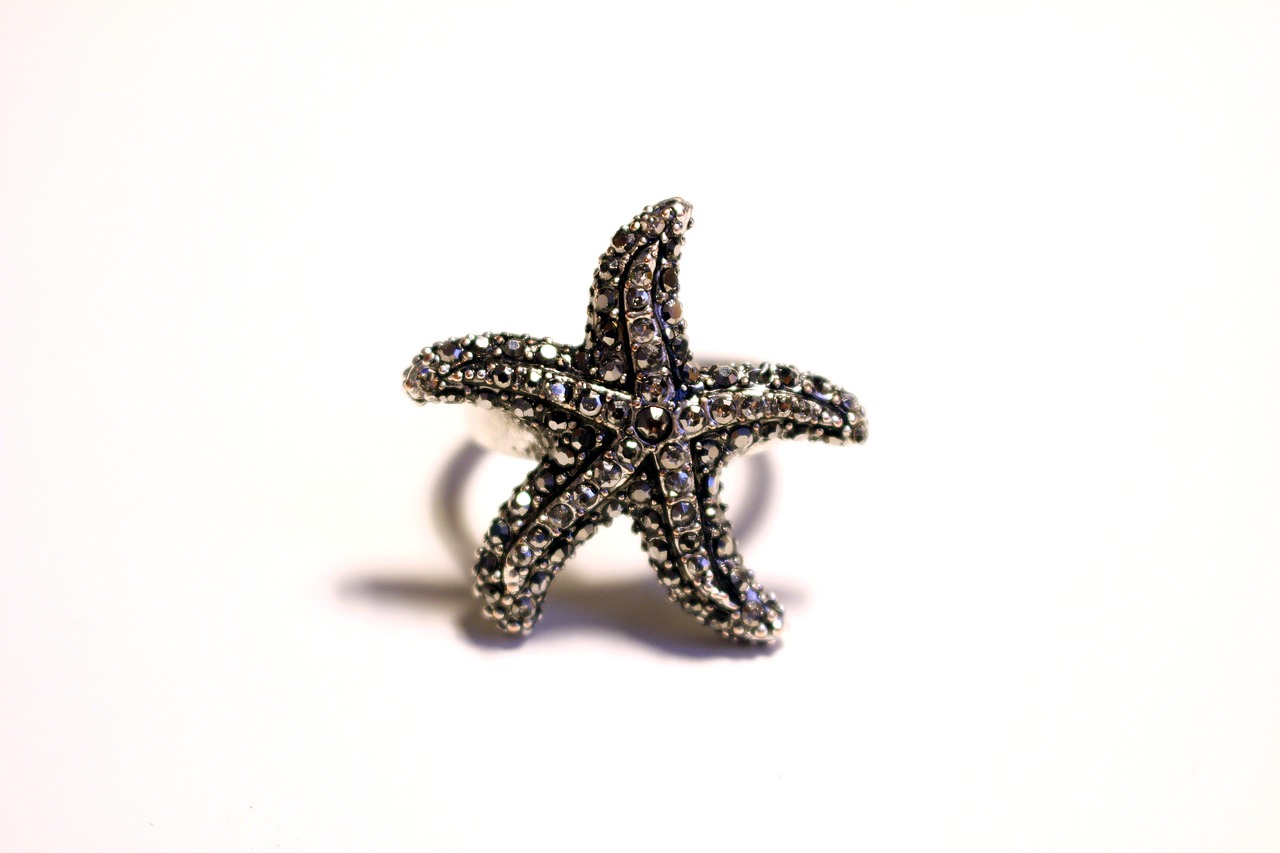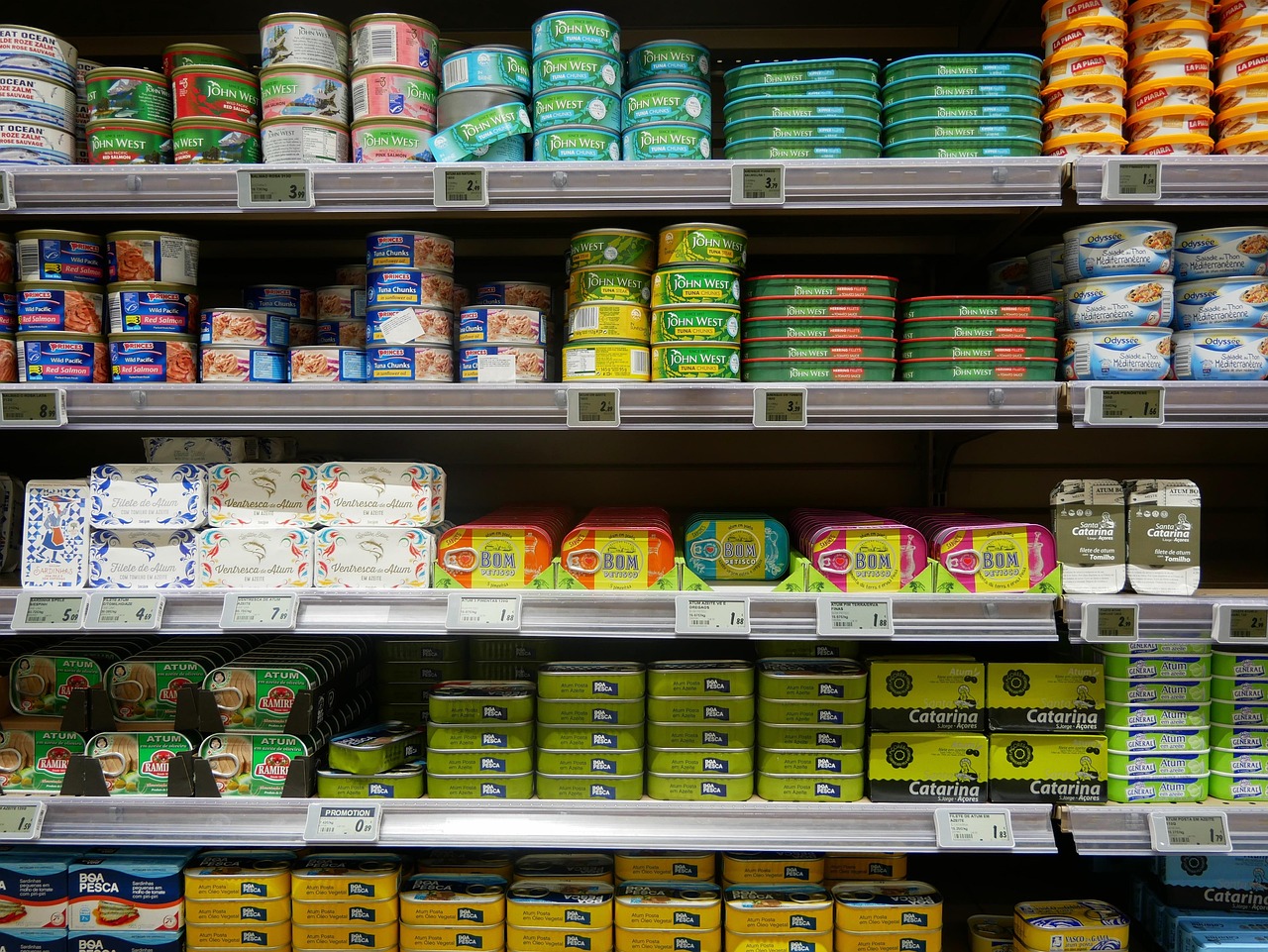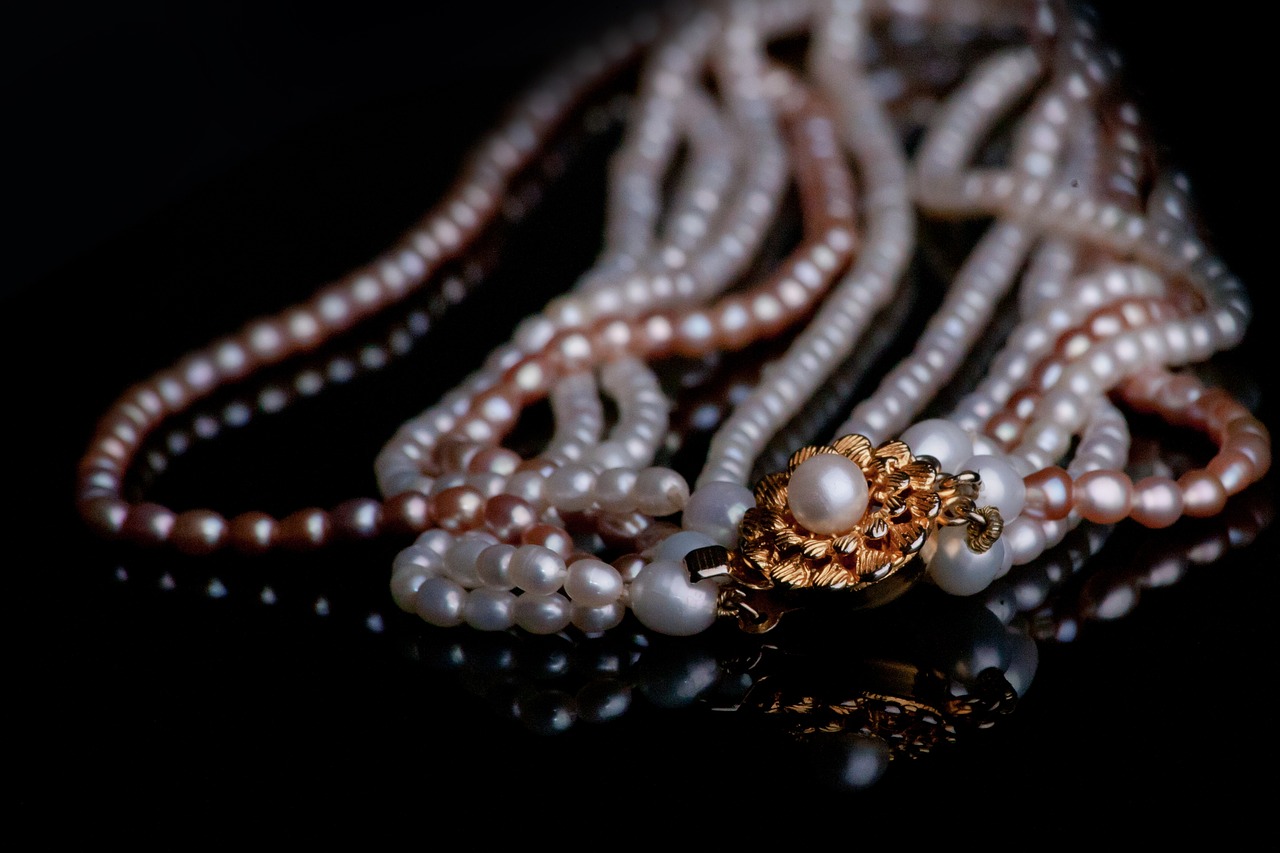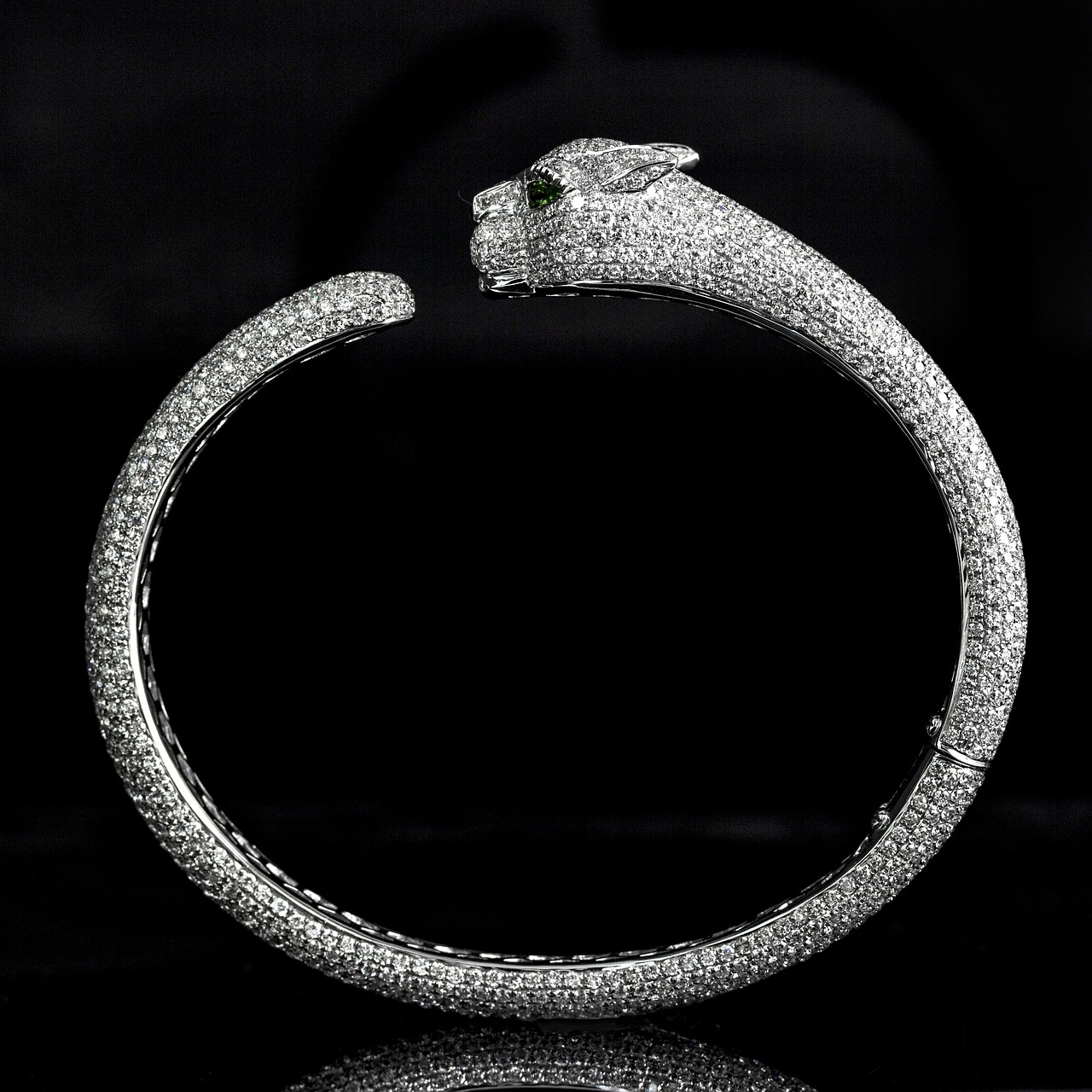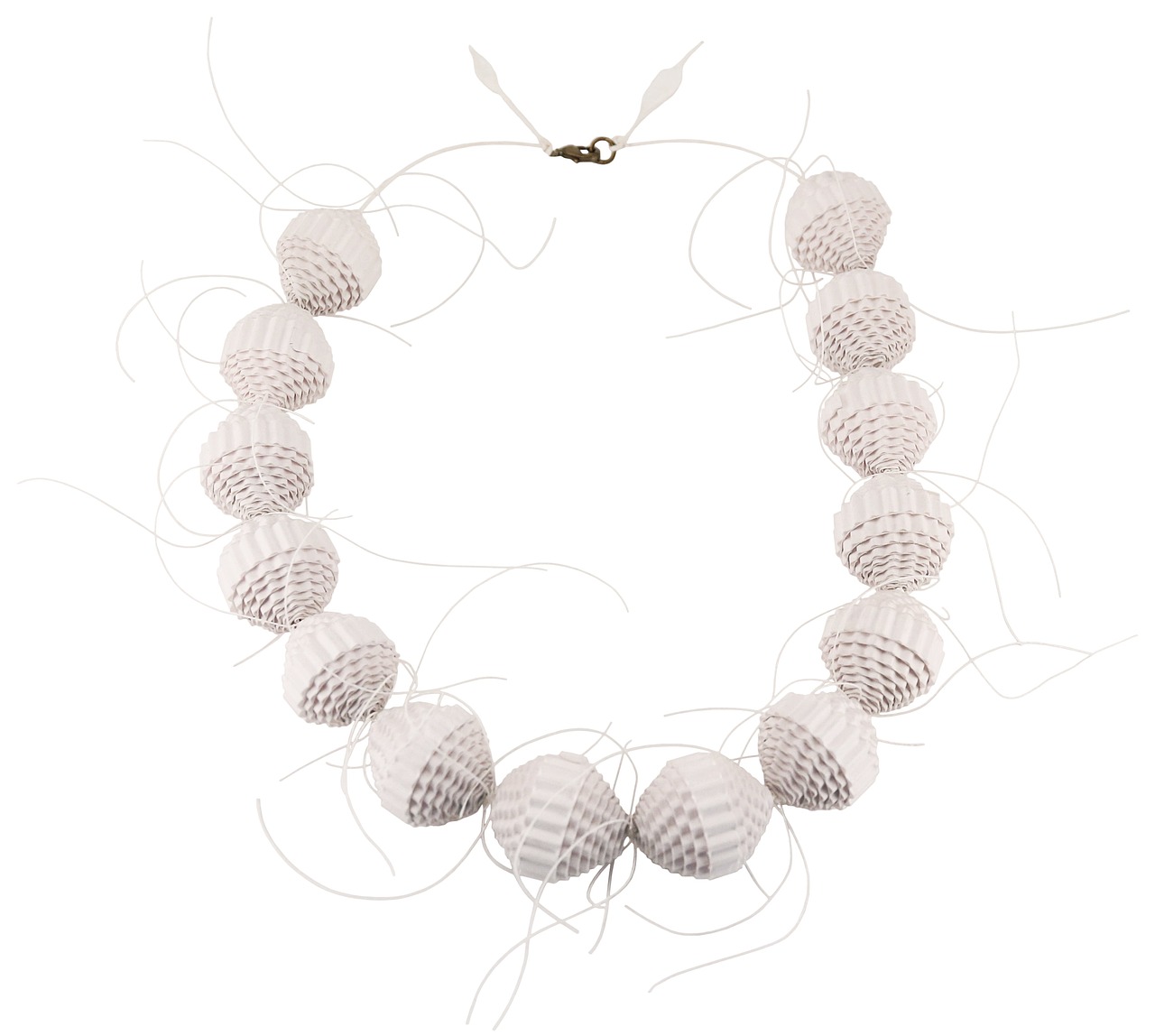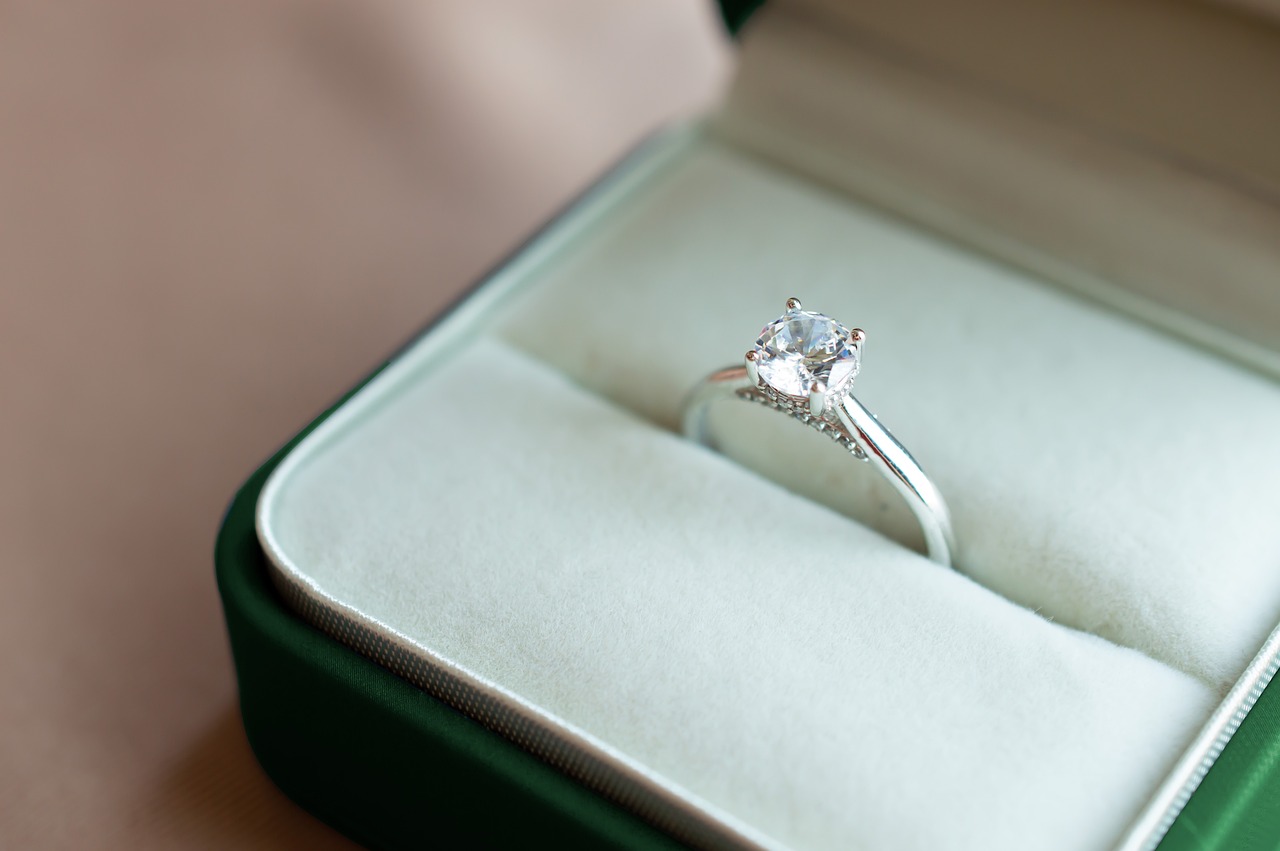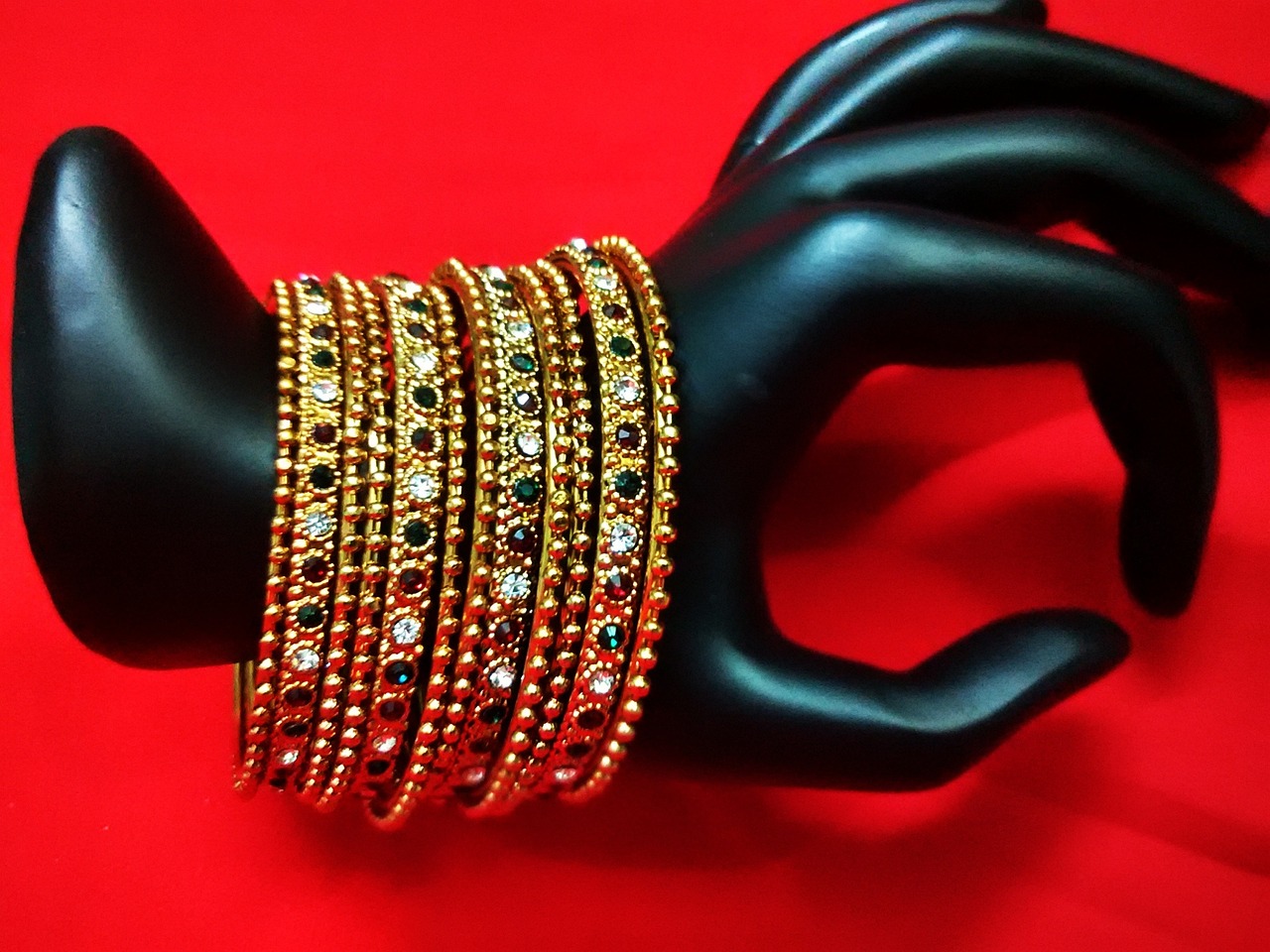Engagement rings have long been a symbol of commitment and love, serving as a tangible representation of a couple’s intention to marry. This article delves into the rich history and significance of engagement rings, tracing their evolution from ancient civilizations to modern-day practices, while highlighting cultural variations and contemporary trends in this timeless tradition.
Engagement rings are more than just pieces of jewelry; they embody a promise of fidelity and partnership. Typically presented during a marriage proposal, these rings signify a couple’s commitment to each other. Understanding their significance can enhance appreciation for this cherished custom.
The tradition of giving engagement rings can be traced back to ancient civilizations, where they held various meanings. This section explores the historical roots of engagement rings and their significance in different cultures.
In ancient Egypt, rings crafted from braided reeds symbolized eternity and were exchanged as a sign of commitment. The circular shape of the ring represented eternal love and devotion, a concept that resonates even today.
Ancient Egyptians often utilized materials such as gold and silver for their rings, signifying wealth and status. This section examines how the choice of materials has evolved over time, reflecting changes in societal values and technological advancements.
In ancient Rome, engagement rings became more formalized, often crafted from iron to symbolize strength. This transition highlights the evolving nature of engagement rings and their growing cultural significance.
The design and significance of engagement rings have undergone significant transformations throughout history. From simple bands to intricate designs, the evolution of styles and materials reflects changing societal norms.
During the Middle Ages, engagement rings often featured gemstones, reflecting the wearer’s wealth and social status. This era’s impact on modern ring designs is profound, as many contemporary rings still incorporate precious stones.
The 20th century marked a pivotal moment in the popularity of diamond engagement rings, largely fueled by innovative marketing campaigns. The phrase “A diamond is forever” became synonymous with love and commitment, solidifying the diamond’s status as the quintessential engagement stone.
Today, engagement rings carry deep personal meanings for couples, often influenced by individual preferences, cultural backgrounds, and personal stories. Each ring tells a unique story, making it a cherished symbol of love.
Selecting an engagement ring can be a daunting task. Here are some practical tips to help couples choose a ring that reflects their personal style and relationship values.
When choosing a diamond engagement ring, it is essential to understand the 4 Cs: cut, color, clarity, and carat. These factors significantly impact the quality and appearance of the ring.
Budgeting for an engagement ring is crucial for many couples. Setting a realistic budget can help navigate the extensive options available without compromising on quality or style.
While diamond rings remain traditional, many couples are now exploring alternative options. This section discusses popular non-traditional choices and their growing acceptance.
Gemstone engagement rings offer unique colors and meanings, making them a popular alternative to diamonds. Various gemstones, such as sapphires and emeralds, can symbolize different qualities and emotions.
As sustainability becomes increasingly important, many couples opt for eco-friendly or lab-grown diamonds. These alternatives provide a responsible choice for environmentally conscious consumers without sacrificing beauty or quality.

What Are Engagement Rings?
Engagement rings are more than just beautiful pieces of jewelry; they are profound symbols of commitment and love. Traditionally presented during a marriage proposal, these rings represent a promise of a future together. The significance of engagement rings transcends mere aesthetics, encompassing rich cultural meanings and personal stories that enhance their value. Understanding what engagement rings truly represent can deepen appreciation for this cherished custom.
Engagement rings hold a unique place in the hearts of couples. They signify a commitment to a shared future and serve as a public declaration of love. Often adorned with precious stones, particularly diamonds, these rings are designed to capture the essence of the relationship they symbolize. The choice of an engagement ring can reflect personal style, values, and even family traditions.
- Classic Solitaires: These feature a single diamond, embodying simplicity and elegance.
- Halo Settings: Surrounded by smaller diamonds, halo settings create a stunning visual effect.
- Three-Stone Rings: Symbolizing the past, present, and future, these rings feature three prominent stones.
- Vintage and Antique Rings: These rings carry a sense of history and unique craftsmanship.
- Custom Designs: Many couples opt for personalized rings that reflect their unique journey together.
Diamonds have become synonymous with engagement rings, especially since the mid-20th century. Their durability and brilliance make them ideal symbols of everlasting love. The marketing campaigns of the 20th century, particularly the famous slogan “A Diamond is Forever,” cemented this association in popular culture. Today, many couples still choose diamonds for their engagement rings, but there is a growing trend toward alternative stones as well.
While diamonds remain the classic choice, many couples are exploring other options:
- Gemstone Rings: Colored gemstones like sapphires, emeralds, and rubies provide a unique flair and personal touch.
- Lab-Grown Diamonds: These eco-friendly alternatives offer the same beauty as natural diamonds but with less environmental impact.
- Moissanite: Known for its brilliance and fire, moissanite is a popular choice for those seeking an ethical and affordable option.
Selecting the perfect engagement ring can be daunting. Here are some practical tips to consider:
- Understand the 4 Cs: Familiarize yourself with cut, color, clarity, and carat weight, as these factors influence the overall quality and price of the diamond.
- Set a Budget: Determine a realistic budget that aligns with your financial situation while ensuring you choose a ring of quality.
- Consider Personal Style: Think about your partner’s style and preferences. A ring that resonates with their personality will be cherished forever.
- Seek Expert Advice: Consult with jewelers or trusted friends to gain insights and recommendations.
In conclusion, engagement rings are not just beautiful accessories; they are profound symbols of commitment and love, carrying deep personal significance for couples. Whether opting for a classic diamond or a unique gemstone, the choice of an engagement ring reflects the couple’s journey and their shared future.

Where Did Engagement Rings Originate?
The tradition of giving engagement rings is a time-honored practice that has evolved significantly over the centuries. Understanding the origins of this custom not only sheds light on its historical significance but also enhances our appreciation for the symbolism behind these beautiful tokens of love.
The practice of giving engagement rings dates back to ancient civilizations, with roots that can be traced to various cultures around the world. This section explores the historical significance of engagement rings and how they have evolved from simple bands to elaborate symbols of commitment.
In ancient Egypt, the exchange of rings was a deeply meaningful tradition. Rings made from braided reeds were often given as a sign of commitment, symbolizing the concept of eternity. The circular shape of the ring represented an unbroken bond, a concept that resonates even today.
The circle has long been associated with life and eternity in various cultures. In ancient Egypt, it represented the everlasting nature of love and commitment. This symbolism continues to be a fundamental aspect of engagement rings, reminding couples of their enduring bond.
Ancient Egyptians often crafted rings from materials like gold and silver, which were symbols of wealth and status. The choice of material was significant, as it reflected the social standing of the individuals involved. This practice laid the groundwork for the precious metals used in modern engagement rings.
As we move into ancient Rome, the tradition of engagement rings became more formalized. Romans often used iron to represent strength and durability in their relationships. This shift marked a transition in the perception of engagement rings, from simple tokens to symbols of serious commitment.
During the Middle Ages, the design of engagement rings evolved further. Gemstones began to be incorporated into rings, reflecting the wearer’s wealth and social status. This era significantly impacted modern ring designs, with many couples today opting for rings adorned with various precious stones.
The 20th century saw a surge in the popularity of diamond engagement rings, largely driven by savvy marketing campaigns. This trend not only established diamonds as the quintessential choice for engagement rings but also solidified their symbolic association with enduring love and commitment.
Today, engagement rings carry profound personal meanings for couples. Each ring tells a unique story, shaped by individual preferences, cultural backgrounds, and personal experiences. Whether it’s a traditional diamond ring or a modern alternative, the significance of these rings remains deeply rooted in love and commitment.
Selecting an engagement ring can be a daunting task. Couples are encouraged to consider their personal style and relationship values when making this decision. Understanding the 4 Cs of diamonds—cut, color, clarity, and carat—is essential for choosing a high-quality ring that reflects the couple’s unique bond.
While diamond rings are traditional, many couples are now exploring alternative options. Gemstone engagement rings offer unique colors and meanings, while eco-friendly and lab-grown diamonds are becoming increasingly popular among environmentally conscious consumers.
In summary, the history of engagement rings is a fascinating journey through time, reflecting societal values and personal commitments. From ancient civilizations to modern-day practices, engagement rings continue to symbolize love, devotion, and the promise of a shared future.
Ancient Egypt: The First Engagement Rings
Engagement rings have a rich and storied history, with their origins tracing back to ancient civilizations. Among these, ancient Egypt stands out as a significant contributor to the tradition of exchanging rings as symbols of love and commitment. In this section, we will explore the cultural importance of these early rings and the profound symbolism they carried.
In ancient Egypt, rings crafted from braided reeds were not merely decorative items; they were powerful symbols of eternity and commitment. The circular shape of the ring represented the unending love between partners, embodying the belief that love transcends the boundaries of life and death. This symbolism was deeply rooted in Egyptian culture, where the concept of eternity was paramount.
The choice of materials in ancient Egyptian rings was significant. Braided reeds were readily available and held a special meaning in the context of nature and life. The act of braiding these reeds into a ring signified the intertwining of two lives, making it a fitting representation of the couple’s bond. Moreover, reeds were associated with the Nile River, which was central to Egyptian life, further emphasizing the connection between love and the natural world.
As time progressed, the symbolism of engagement rings in ancient Egypt evolved. While initially simple and made from organic materials, the introduction of precious metals like gold and silver marked a shift in the status and significance of these rings. Gold, in particular, was highly valued and associated with the divine, representing not only wealth but also the eternal nature of love. This transition reflected the growing importance of social status in relationships.
Rings served as a public declaration of commitment in ancient Egyptian society. When a couple exchanged rings, it was a formal acknowledgment of their relationship, much like modern engagement practices. This public display of commitment was essential, as it solidified social bonds and reinforced family ties. The act of exchanging rings was often accompanied by rituals that celebrated the union, further embedding the significance of rings in the cultural fabric of ancient Egypt.
The influence of ancient Egyptian rings can still be seen in modern engagement practices. The idea of the circle representing eternity remains a prevalent theme in contemporary ring designs. Furthermore, the transition from simple materials to more luxurious options, such as diamonds and other gemstones, mirrors the evolution seen in ancient times. Couples today often choose rings that reflect both personal style and cultural significance, much like their ancient counterparts.
The engagement rings of ancient Egypt laid the groundwork for a tradition that continues to thrive today. Their rich symbolism and cultural significance remind us of the timeless nature of love and commitment. As we explore the evolution of engagement rings through history, it is essential to acknowledge the profound impact of ancient civilizations, particularly Egypt, in shaping this cherished custom.
The Circle of Life Symbolism
The circular shape of the ring has long been a powerful symbol of eternal love and commitment, particularly in ancient Egyptian culture. This symbolism is rooted in the notion that a circle has no beginning or end, representing an unbroken bond between partners. The ancient Egyptians believed that the circular shape of the ring connected the couple to the divine, serving as a reminder that their love transcended the physical realm.
Today, this symbolism continues to resonate deeply within modern relationships. Engagement rings are often seen as a representation of a commitment that is meant to last a lifetime. The tradition of exchanging rings during proposals has evolved, but the core meaning remains unchanged. Couples today still view the ring as a physical manifestation of their love and dedication to one another, echoing the sentiments of ancient cultures.
One of the most significant aspects of the circular shape is its ability to convey a sense of unity and completeness. In various cultures, the ring serves as a reminder that two individuals are becoming one, embarking on a journey together. This concept is further emphasized by the use of precious materials that enhance the ring’s beauty and significance. Whether it is a classic diamond or a unique gemstone, the choice of material can also reflect the couple’s personal story.
Moreover, the symbolism of the circle has been embraced by various cultures throughout history. For instance, in ancient Rome, rings were used to symbolize loyalty and fidelity, while in other societies, they were seen as tokens of power and status. This rich tapestry of meanings adds depth to the modern engagement ring, making it a cherished item filled with personal history and significance.
As societal values shift, the interpretation of the engagement ring is also evolving. Many couples today are seeking rings that not only represent their love but also align with their personal values. This has led to a rise in alternative materials and designs that break away from traditional norms. For example, some couples are opting for eco-friendly or lab-grown diamonds, which reflect a commitment to sustainability while still honoring the timeless symbolism of the ring.
Furthermore, the choice of a ring can also reflect cultural backgrounds and individual preferences. Couples may choose to incorporate specific symbols or engravings that hold personal meaning, further enhancing the ring’s significance. This personalization allows for a unique expression of love that honors both the past and the present.
In conclusion, the circular shape of the engagement ring remains a powerful symbol of eternal love and commitment, deeply rooted in ancient traditions. As couples navigate their relationships today, they continue to embrace this symbolism while adapting it to their unique stories and values. The engagement ring, whether traditional or contemporary, serves as a lasting reminder of the bond shared between partners, echoing the sentiments of love that have transcended time.
Materials Used in Ancient Rings
Engagement rings have a rich history that reflects cultural values and societal changes over time. One fascinating aspect of this history is the , which have evolved significantly from their origins. In ancient civilizations, the choice of materials was not merely aesthetic; it was deeply intertwined with symbolism, status, and beliefs.
In ancient Egypt, rings were often crafted from gold and silver, metals that signified wealth and power. Gold was particularly revered for its luster and permanence, symbolizing the sun and divine protection. Silver, on the other hand, was associated with the moon and femininity. The combination of these precious metals in ring-making illustrated the couple’s social standing and commitment.
The choice of materials in ancient rings was a clear indicator of one’s social status. The wealthier classes adorned themselves with intricate designs made from precious metals and gemstones, while commoners might have opted for simpler bands made from materials like copper or bronze. This differentiation not only highlighted personal wealth but also reinforced societal hierarchies.
The symbolism of materials extended beyond mere wealth. For example, the circular shape of a ring made from these precious metals represented eternal love and commitment, a belief that has persisted through the ages. The Egyptians believed that the ring was a pathway to the heart, making the choice of durable materials even more significant.
As we moved into the Roman era, the materials used for engagement rings began to change. Iron became popular, symbolizing strength and durability. This shift marked a transition in the perception of engagement rings from simple tokens of love to more formalized symbols of commitment. With the rise of Christianity, the significance of the ring evolved further, incorporating different materials and designs that reflected religious beliefs.
Today, the landscape of engagement rings has expanded to include a variety of materials. While diamonds remain the most popular choice, many couples are now opting for alternative stones such as emeralds, sapphires, and moissanite. These gemstones not only offer unique aesthetic qualities but also allow individuals to express their personal style and values.
In recent years, there has been a growing trend towards eco-friendly and lab-grown diamonds. These options cater to environmentally conscious consumers who wish to minimize their ecological footprint while still choosing beautiful and meaningful engagement rings. Lab-grown diamonds, in particular, have the same physical and chemical properties as natural diamonds, making them an attractive alternative.
The evolution of materials used in engagement rings reflects broader societal changes and values. As couples increasingly prioritize sustainability and personal expression, the future of engagement rings looks promising. The materials chosen today not only signify love and commitment but also embody the values and beliefs of the individuals wearing them.
Understanding the historical context and significance of materials used in engagement rings can enhance appreciation for this cherished tradition. As we continue to navigate the complexities of modern relationships, the choice of materials will undoubtedly play a pivotal role in shaping the engagement ring of the future.
Engagement Rings in Ancient Rome
Engagement rings have a long and fascinating history, with each culture adding its unique touch to their significance and design. In ancient Rome, these rings took on a more formalized role, marking a significant transition in how engagement was perceived and symbolized.
In the early days of Roman society, engagement rings were primarily made of iron, a material that symbolized strength and durability. This choice was not merely aesthetic; it represented the commitment and stability that the couple was expected to uphold in their union. As Rome evolved, so too did the design and materials of these rings, reflecting the growing sophistication of Roman culture.
During this period, the engagement ring served as a public declaration of a couple’s intention to marry. It was common for the ring to be worn on the fourth finger of the left hand, a tradition that persists in many cultures today. Romans believed that a vein in this finger, known as the vena amoris, directly connected to the heart, symbolizing the deep emotional ties between partners.
As Roman society progressed, the engagement ring began to incorporate more intricate designs and materials. While iron remained popular, gold and silver also became common choices, symbolizing wealth and status. The use of precious metals indicated not only the couple’s financial capability but also the seriousness of their commitment. This shift marked the beginning of the engagement ring’s evolution into a more personalized and expressive token of love.
Moreover, the introduction of gemstones in engagement rings during the later years of the Roman Empire added another layer of meaning. Each gemstone was believed to carry its unique symbolism and properties, allowing couples to choose rings that resonated with their personal values and aspirations. For instance, emeralds symbolized rebirth, while rubies were associated with passion and love. This trend paved the way for the diverse array of engagement rings we see today.
In addition to their material and aesthetic evolution, engagement rings in ancient Rome also reflected the social dynamics of the time. Marriages were often strategic alliances between families, and the engagement ring served as a tangible representation of this bond. The ring not only signified the couple’s commitment to each other but also their families’ agreement to the union, making it a crucial element in the social fabric of Roman life.
Overall, engagement rings in ancient Rome represented a pivotal moment in the history of romantic commitment. They transitioned from simple tokens of intention to complex symbols of love, wealth, and societal status. As we continue to wear engagement rings today, we honor this rich history and the myriad meanings they have carried through the ages.

How Engagement Rings Evolved Over Time
The evolution of engagement rings is a fascinating journey that reflects changing societal values, artistic trends, and cultural significance. From their humble beginnings to the modern masterpieces we see today, engagement rings have undergone significant transformations in both design and meaning.
The design and significance of engagement rings have transformed throughout history. This section outlines key changes in styles and materials over the centuries, illustrating how these rings have adapted to reflect the times.
- Early Beginnings: The tradition of engagement rings can be traced back to ancient civilizations, where rings were crafted from materials like braided reeds in Egypt or iron in Rome. These early rings symbolized commitment and were often imbued with cultural significance.
- Middle Ages Influence: During the Middle Ages, engagement rings began to include gemstones, reflecting the wearer’s wealth and status. This era saw the introduction of intricate designs and the use of precious metals, which added to the ring’s allure.
- The Renaissance Period: The Renaissance brought about a renewed appreciation for artistry and craftsmanship. Engagement rings from this period often featured elaborate designs, with gemstones set in ornate settings that showcased the skill of the jeweler.
- The Rise of Diamonds: The 20th century marked a significant turning point with the rise of diamond engagement rings. This trend was largely fueled by successful marketing campaigns, particularly the famous slogan “A diamond is forever,” which solidified the diamond’s status as the ultimate symbol of love and commitment.
- Modern Trends: Today, engagement rings come in a variety of styles and materials. Couples are increasingly opting for unique designs that reflect their personal tastes, including vintage styles, alternative gemstones, and even lab-grown diamonds. This shift highlights a broader trend of personalization in the engagement ring market.
Throughout history, the engagement ring has evolved from a simple token of commitment to a complex symbol of love, individuality, and social status. As societal norms continue to shift, so too will the designs and meanings of these cherished rings.
Understanding the historical context of engagement rings can enhance our appreciation for this timeless tradition. Whether it’s a classic diamond ring or a contemporary design featuring unique gemstones, each ring tells a story that reflects the values and preferences of the couple it represents.
As we move forward, the engagement ring will likely continue to evolve, influenced by cultural shifts, technological advancements, and personal preferences. The future of engagement rings promises to be as diverse and dynamic as the couples who wear them.
The Influence of the Middle Ages
Engagement rings have a rich history that reflects cultural values and societal norms throughout the ages. One pivotal era in the evolution of these rings is the Middle Ages, a time when the significance and design of engagement rings underwent remarkable transformation. This section delves into how the Middle Ages influenced modern ring designs and the symbolism associated with gemstones.
During the Middle Ages, engagement rings became a canvas for displaying wealth and social status. The use of gemstones was not merely decorative; it was a statement of the wearer’s position in society. Precious stones such as rubies, sapphires, and emeralds were often incorporated into the design, each carrying its own unique symbolism and meaning.
The choice of gemstone was significant, as it indicated the family’s wealth and lineage. For instance, a ring adorned with a large diamond or a rare gemstone was a clear marker of affluence. Commoners often opted for simpler designs, sometimes using glass or cheap stones to mimic the appearance of more expensive gems. This disparity in gemstone quality highlighted the social stratification of the time.
- Rubies: Symbolized passion and love, often chosen to convey deep emotional ties.
- Sapphires: Represented wisdom and nobility, frequently used by the aristocracy.
- Emeralds: Associated with fertility and rebirth, making them a popular choice for engagement rings.
The Middle Ages were also marked by a strong religious influence, which extended to engagement rings. Many rings featured religious symbols or motifs, such as crosses or hearts, intertwining the concepts of love and faith. The belief that a ring could carry blessings from the divine made these pieces even more significant.
In addition to gemstones, the materials used in the construction of engagement rings during this period were varied. Gold was the most sought-after metal, symbolizing purity and eternal love. Silver was also popular, especially among the lower classes. The craftsmanship of these rings was often intricate, with designs that included filigree work and engraved patterns, showcasing the skill of artisans of the time.
The influence of the Middle Ages on modern engagement rings is evident in several ways. The tradition of using gemstones remains strong, with couples today often selecting stones that have personal significance. The emphasis on quality and craftsmanship also continues, as many couples seek rings that reflect their unique love story.
Moreover, the symbolism associated with various gemstones has persisted, allowing couples to choose rings that resonate with their personal values and beliefs. The Middle Ages established a foundation for the engagement ring as a powerful symbol of love, commitment, and social identity, a tradition that continues to evolve yet remains deeply rooted in history.
The Rise of Diamond Engagement Rings
has a fascinating history that intertwines with marketing, culture, and changing societal values. In the early 20th century, diamond engagement rings were not as prevalent as they are today. However, a series of strategic marketing campaigns transformed them into a symbol of love and commitment, forever altering the landscape of engagement traditions.
One of the pivotal moments in the rise of diamond engagement rings occurred in 1947 when the De Beers diamond company launched the iconic slogan, “A Diamond is Forever.” This campaign not only emphasized the durability and timelessness of diamonds but also positioned them as the ultimate choice for engagement rings. As a result, diamonds became synonymous with love, leading many couples to view them as a necessary part of their engagement.
Several factors contributed to the surge in popularity of diamond engagement rings:
- Marketing Innovations: The De Beers campaign was revolutionary, utilizing print media, celebrity endorsements, and even Hollywood films to promote diamond rings. This marketing strategy effectively created a cultural narrative around diamonds that resonated with consumers.
- Societal Expectations: As the concept of romantic love gained prominence in Western culture, the expectation of receiving a diamond engagement ring became ingrained in societal norms. Couples began to associate the size and quality of the diamond with the level of commitment and love from their partner.
- Economic Factors: Post-World War II economic growth allowed more couples to afford diamond engagement rings. The burgeoning middle class began to see diamonds as attainable symbols of love and status.
As a result of these influences, the diamond engagement ring became a cultural staple, not just in Western societies but around the world. The diamond’s brilliance and rarity added to its allure, making it a preferred choice for many. Additionally, the marketing campaigns highlighted the emotional significance of diamonds, reinforcing the idea that they were essential for a meaningful proposal.
The impact of this trend has been lasting. Today, diamond engagement rings are often seen as a rite of passage for couples, with many feeling that a proposal without a diamond ring lacks authenticity. This perception has led to the ongoing demand for diamonds, shaping the jewelry industry significantly.
Moreover, the rise of diamond engagement rings has also sparked discussions about ethics and sustainability in the jewelry market. As awareness of conflict diamonds and environmental concerns grows, many couples are now considering alternatives, such as lab-grown diamonds and ethically sourced gemstones. This shift reflects changing values in society, as couples seek to align their purchases with their personal beliefs.
In conclusion, the rise of diamond engagement rings is a testament to the power of marketing and cultural evolution. From a relatively niche item to a global symbol of love, the diamond engagement ring has become entrenched in societal expectations and personal aspirations. As we move forward, it will be interesting to see how this tradition continues to evolve in response to changing values and consumer preferences.
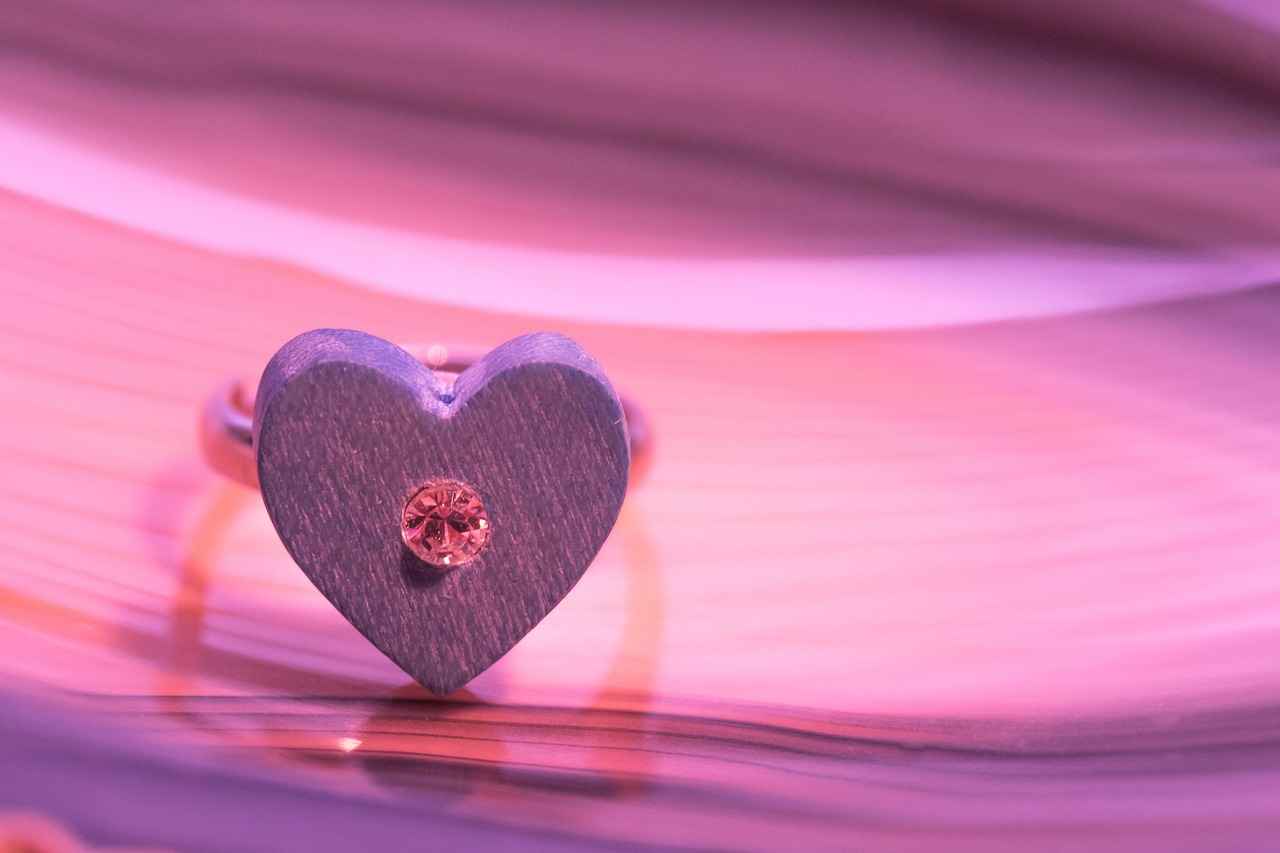
What Do Engagement Rings Mean Today?
Engagement rings have evolved significantly over the years, transforming from simple tokens of love to intricate symbols of personal stories and cultural heritage. What do engagement rings mean today? This question invites a closer look at the contemporary significance of these cherished pieces of jewelry, which often reflect the unique preferences and backgrounds of the couples who wear them.
For many couples, engagement rings are not just beautiful adornments; they are imbued with deep personal meanings. Each ring tells a story, often reflecting the couple’s journey together. From the choice of metal to the type of stone, every detail can symbolize a shared experience or a significant moment in their relationship. For instance, some couples may opt for a ring featuring a gemstone that holds special meaning, such as the birthstone of one partner or a stone that represents a memorable trip together.
Engagement rings are also shaped by cultural backgrounds, which can greatly influence their significance. In some cultures, the engagement ring is a symbol of family heritage, passed down through generations, while in others, it may represent a formal agreement between families. For example, in Indian culture, engagement rings may be accompanied by elaborate rituals and celebrations that highlight the importance of family and tradition. Understanding these cultural nuances can enhance appreciation for the ring’s meaning.
Modern trends in engagement rings also reflect changing societal values. Many couples today prioritize sustainability and ethical sourcing, leading to a rise in eco-friendly options. Lab-grown diamonds and ethically sourced gemstones are becoming increasingly popular, allowing couples to express their love while aligning with their values. This shift not only speaks to personal preferences but also highlights a broader movement towards responsible consumerism.
Individual preferences play a crucial role in determining the meaning of engagement rings. Some couples may choose minimalist designs that reflect their personal style, while others may opt for ornate, vintage-inspired pieces that tell a story of romance and nostalgia. The choice of ring style can also be influenced by lifestyle considerations; for instance, active individuals may prefer more durable settings that can withstand daily wear.
The design elements of an engagement ring can carry significant symbolism. The shape of the ring, for example, can represent different qualities. A round diamond is often associated with eternity due to its circular shape, while a princess-cut stone may symbolize modernity and elegance. Furthermore, the choice of metal—whether it be yellow gold, white gold, or rose gold—can also reflect personal taste and cultural significance.
Ultimately, engagement rings serve as profound expressions of love and commitment. They encapsulate the essence of a relationship, making them more than just jewelry. The significance of these rings today lies in their ability to convey personal stories, cultural values, and individual choices, making each ring a unique representation of the couple’s bond.

How to Choose the Perfect Engagement Ring?
Selecting an engagement ring can be an overwhelming experience, especially with the myriad of styles, settings, and gemstones available today. However, finding a ring that truly reflects your personal style and the values of your relationship can be a rewarding journey. Here are some practical tips to guide you through the process.
Before diving into the selection process, it is essential to define your personal style. Consider the following:
- Classic: Timeless designs featuring solitaire diamonds or simple bands.
- Vintage: Rings inspired by past eras, often with intricate details.
- Modern: Unique shapes and unconventional gemstones that stand out.
Take note of the jewelry your partner usually wears. Do they prefer gold or silver? Are they drawn to bold designs or more subtle pieces? This will help narrow down your options.
Engagement rings should also reflect the values of your relationship. Here are some factors to think about:
- Symbolism: What does love mean to you both? Consider incorporating symbols that represent your journey together.
- Ethics: If sustainability is important, you might opt for lab-grown diamonds or ethically sourced gemstones.
- Budget: Establish a budget that aligns with your financial values without compromising on quality.
Engagement rings come in various styles and settings, each offering a unique aesthetic. Here are some popular options:
| Style | Description |
|---|---|
| Solitaire | A single diamond or gemstone, showcasing simplicity and elegance. |
| Halo | A center stone surrounded by smaller diamonds, enhancing its brilliance. |
| Three-Stone | Symbolizes the past, present, and future of your relationship. |
| Custom Design | A unique ring tailored specifically to your partner’s taste. |
If you decide on a diamond ring, familiarize yourself with the 4 Cs: cut, color, clarity, and carat weight. Each factor plays a vital role in the overall quality and appearance of the diamond:
- Cut: A well-cut diamond reflects light beautifully.
- Color: The less color, the higher the value; aim for near-colorless diamonds.
- Clarity: Fewer inclusions mean a more valuable diamond.
- Carat: Larger carat weights often come with higher prices, but size isn’t everything.
Don’t hesitate to seek advice from professionals. Jewelers can provide valuable insights into the quality and options available. Additionally, consider bringing a trusted friend or family member for a second opinion.
Choosing the perfect engagement ring is a blend of personal taste, relationship values, and practical considerations. By taking the time to explore your options and understanding what resonates with both you and your partner, you can find a ring that symbolizes your unique love story.
Understanding the 4 Cs of Diamonds
When it comes to selecting a diamond engagement ring, understanding the 4 Cs—cut, color, clarity, and carat—is crucial. Each of these factors plays a significant role in determining the quality and value of the diamond, which in turn affects the overall beauty of the ring. This section will provide a detailed explanation of these attributes and their implications for your choice of engagement ring.
The cut of a diamond is arguably the most important of the 4 Cs. It refers to how well the diamond has been shaped and faceted. A well-cut diamond reflects light beautifully, creating a stunning sparkle that captivates the eye. When examining the cut, consider the following:
- Brilliance: The ability of the diamond to reflect light.
- Fire: The dispersion of light into various colors.
- Scintillation: The sparkle and flashes of light when the diamond moves.
Investing in a high-quality cut will enhance the overall appearance of the ring, making it a focal point of admiration.
The color of a diamond refers to the presence of any color tint in a diamond, with the most valuable diamonds being colorless. Diamonds are graded on a scale from D (colorless) to Z (light yellow or brown). Here are some considerations:
- Colorless Diamonds: These are the most sought after and expensive.
- Near Colorless Diamonds: These diamonds offer great value, with minimal color visible.
- Fancy Color Diamonds: These can be yellow, blue, or pink and are valued based on their hue and intensity.
Choosing the right color can significantly affect the aesthetic appeal and price of your engagement ring.
Clarity refers to the presence of internal or external flaws, known as inclusions and blemishes, respectively. Diamonds with higher clarity grades are more valuable. The clarity scale ranges from Flawless (FL) to Included (I). Here are some key points:
- Flawless Diamonds: No inclusions or blemishes visible under 10x magnification.
- Very Slightly Included: Minor inclusions that are difficult to see.
- Included Diamonds: Inclusions that are visible to the naked eye.
While higher clarity diamonds are more expensive, many inclusions are microscopic and do not affect the diamond’s overall beauty, allowing for budget-friendly options.
Carat weight measures the size of the diamond, with one carat equaling 0.2 grams. While larger diamonds are more expensive, the price per carat increases significantly as the weight increases. Here are some insights:
- Size vs. Appearance: A well-cut diamond may appear larger than a poorly cut diamond of the same carat weight.
- Budget Considerations: Opting for a slightly smaller carat weight can allow you to invest more in cut and clarity.
Understanding carat weight helps you balance size and quality, ensuring that you find a ring that fits both your aesthetic desires and your budget.
By considering the 4 Cs—cut, color, clarity, and carat—you can make an informed decision when selecting the perfect diamond engagement ring. Each factor contributes to the ring’s overall beauty and value, making it essential to understand their implications.
Setting a Budget for Your Engagement Ring
When it comes to planning a proposal, one of the most significant decisions couples face is setting a budget for an engagement ring. This decision can often feel overwhelming, but with careful consideration and planning, it can be manageable. Establishing a realistic budget is essential to ensure that you find a ring that not only fits your financial situation but also reflects the love and commitment you share.
Budgeting for an engagement ring is crucial because it allows couples to prioritize their finances while still finding a ring that meets their expectations. By setting a budget, you can avoid overspending and the stress that comes with it. It also helps in narrowing down your options, making the selection process smoother.
- Assess Your Financial Situation: Start by evaluating your income, expenses, and savings. This will give you a clear idea of how much you can realistically allocate for the ring.
- Consider the 3-Month Rule: A common guideline suggests spending about three months’ salary on an engagement ring. However, this is merely a suggestion; adjust it based on your financial comfort.
- Include Additional Costs: Remember to account for additional expenses such as insurance, maintenance, and any potential resizing or customization.
While it’s important to stick to your budget, you shouldn’t have to compromise on quality or style. Here are some tips to help you find that balance:
- Research Different Styles: Explore various ring styles and settings. Understanding what you want can help you find a ring that meets your aesthetic desires without overspending.
- Consider Alternative Stones: While diamonds are traditional, consider other gemstones that may be more affordable yet equally beautiful, such as sapphires or moissanite.
- Shop Around: Don’t settle for the first ring you see. Visit multiple jewelers, both online and in-store, to compare prices and styles.
If your dream ring exceeds your budget, consider exploring financing options. Many jewelers offer payment plans that allow you to pay over time, making it easier to manage your finances while still purchasing a quality ring. Just be sure to read the terms carefully to avoid high-interest rates.
Setting a budget for your engagement ring is a crucial step in the proposal process. By assessing your finances, understanding your options, and exploring different styles, you can find a ring that symbolizes your love without compromising your financial stability. Remember, the ring is a representation of your commitment, and it should reflect your unique relationship.
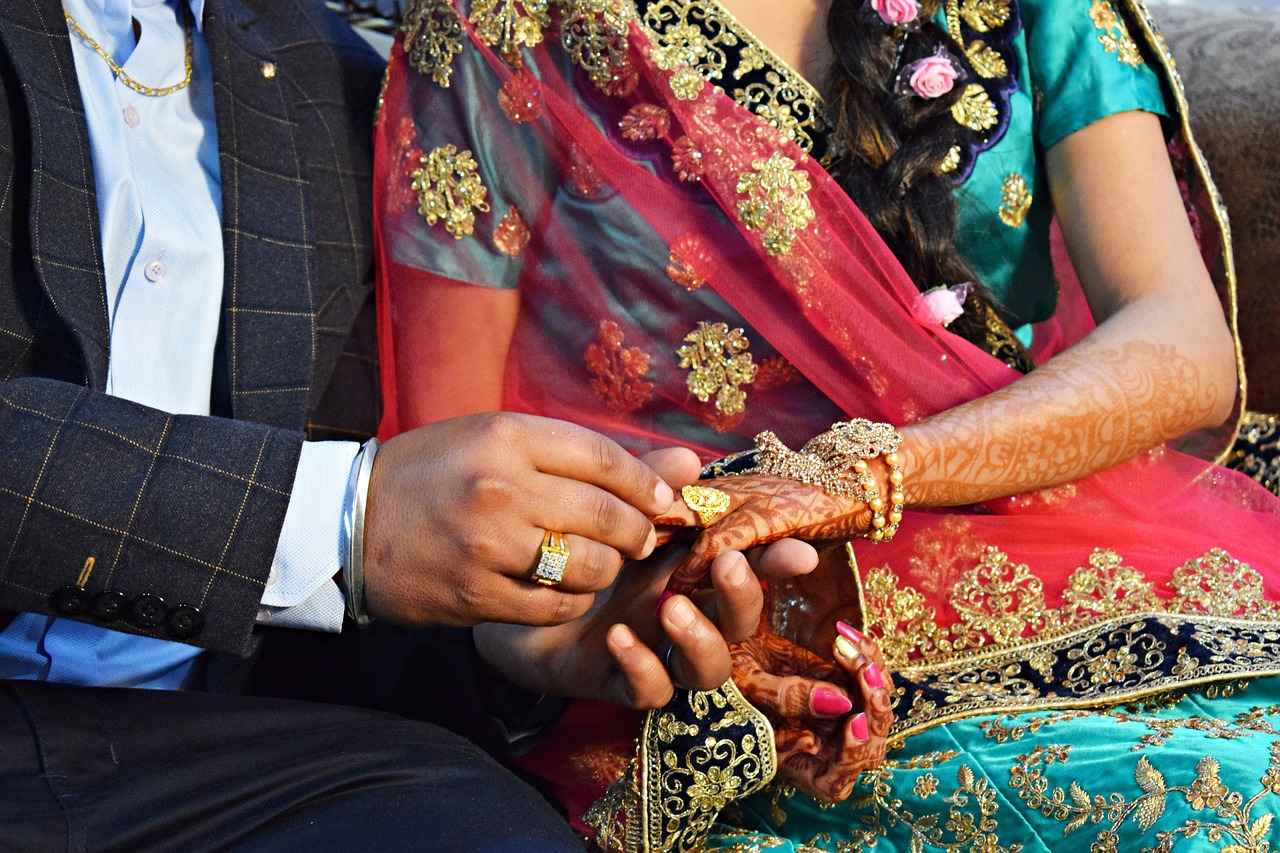
Are There Alternatives to Traditional Engagement Rings?
As couples seek to express their unique love stories, non-traditional engagement rings have gained significant popularity. While diamond rings have long been the go-to choice for many, a growing number of couples are exploring alternatives that resonate more with their personal values and tastes. This shift reflects a broader trend towards individuality and sustainability in the realm of engagement jewelry.
When considering alternatives to the classic diamond ring, couples have a variety of options that range from gemstone engagement rings to eco-friendly choices. Each option carries its own unique significance and appeal.
Gemstone engagement rings are becoming increasingly popular due to their vibrant colors and unique meanings. Unlike diamonds, which are often associated with traditional values, gemstones can symbolize personal stories or traits. For example:
- Sapphires are often associated with loyalty and nobility.
- Emeralds symbolize rebirth and love.
- Rubies represent passion and courage.
Couples are drawn to these stones not only for their beauty but also for the emotional connections they can embody. This option allows for a ring that is as unique as the relationship itself.
With growing awareness of environmental issues, many couples are turning to eco-friendly and lab-grown diamonds as sustainable alternatives. These diamonds are created in controlled environments, significantly reducing the environmental impact associated with traditional diamond mining.
Lab-grown diamonds are chemically identical to natural diamonds but are often more affordable. They provide a guilt-free option for couples who want to celebrate their love without compromising their values. Here are some benefits:
- Cost-Effective: Lab-grown diamonds can cost up to 40% less than their natural counterparts.
- Ethical Sourcing: These diamonds eliminate concerns about conflict diamonds.
- Environmental Impact: Reduced mining means less harm to ecosystems.
Vintage and antique rings offer a unique charm and history that new rings often lack. Couples who choose these rings often appreciate the craftsmanship and stories behind them. Additionally, selecting a vintage ring can be a more sustainable choice, as it promotes the reuse of materials.
When considering a vintage ring, couples should look for reputable dealers who can verify the ring’s authenticity and condition. This option not only provides a distinctive look but also a meaningful connection to the past.
Ultimately, the choice of an engagement ring reflects the couple’s values and relationship. Many couples today prioritize sustainability, individuality, and personal significance over tradition. This shift is reshaping the landscape of engagement rings, allowing for a broader interpretation of what these symbols of love can represent.
As the trend towards non-traditional engagement rings continues to grow, it is clear that couples are embracing the opportunity to express their unique journeys. Whether through vibrant gemstones, sustainable diamonds, or vintage finds, the options available today cater to a wide range of tastes and values.
Gemstone Engagement Rings
have emerged as a captivating alternative to traditional diamond rings, offering a stunning array of colors and meanings. These unique rings not only symbolize love and commitment but also reflect the wearer’s personality and style. In this section, we will explore various gemstones, their significance, and why they are becoming increasingly popular in engagement rings.
Many couples are now seeking for several reasons:
- Personalization: Gemstones come in a variety of colors, allowing couples to choose stones that resonate with their unique love story.
- Meaning: Each gemstone carries its own symbolism, making it a meaningful choice for an engagement ring.
- Cost-Effective: Gemstones can be more affordable than diamonds, offering beautiful options for couples on a budget.
Here is a list of some popular gemstones used in engagement rings, along with their meanings:
| Gemstone | Color | Meaning |
|---|---|---|
| Sapphire | Blue (also available in other colors) | Wisdom, loyalty, and nobility |
| Emerald | Green | Love, rebirth, and fertility |
| Ruby | Red | Passion, protection, and vitality |
| Amethyst | Purple | Calmness, balance, and peace |
| Topaz | Yellow, blue, and other colors | Truth, forgiveness, and love |
Selecting the right gemstone for an engagement ring involves considering several factors:
- Color Preferences: Consider the favorite colors of your partner and how they might feel about wearing a specific gemstone.
- Durability: Some gemstones, like sapphires and rubies, are more durable than others, making them ideal for everyday wear.
- Symbolism: Think about the meanings associated with different gemstones and how they relate to your relationship.
The setting of a gemstone engagement ring is just as important as the stone itself. Popular settings include:
- Solitaire: A single gemstone that stands out, perfect for showcasing the beauty of the stone.
- Halo: A central gemstone surrounded by smaller stones, enhancing its brilliance and size.
- Three-Stone: Symbolizing the past, present, and future, this setting features three gemstones.
In conclusion, gemstone engagement rings offer a beautiful and meaningful alternative to traditional diamond rings. With their unique colors and rich symbolism, they allow couples to express their love in a personal and distinctive way. Whether you opt for a vibrant sapphire or a classic emerald, a gemstone engagement ring can be a stunning representation of your commitment and love.
Eco-Friendly and Lab-Grown Diamonds
In a world increasingly focused on **sustainability** and ethical consumption, many couples are turning to eco-friendly and lab-grown diamonds as alternatives to traditional mined diamonds. This shift not only reflects a growing awareness of environmental issues but also aligns with the values of many modern consumers. Let’s delve into the benefits of these innovative options.
Eco-friendly diamonds, often referred to as ethical diamonds, are stones that are sourced in a way that minimizes environmental impact and supports fair labor practices. These diamonds are typically mined using sustainable methods, ensuring that the surrounding ecosystems are preserved. Additionally, many eco-friendly diamonds are certified by organizations that uphold strict ethical standards.
Lab-grown diamonds, also known as synthesized diamonds, are created in controlled environments using advanced technology that replicates the natural diamond formation process. These diamonds possess the same physical, chemical, and optical properties as their mined counterparts, making them indistinguishable to the naked eye.
- Environmental Impact: Lab-grown diamonds significantly reduce the carbon footprint associated with mining. Traditional diamond mining can lead to deforestation, habitat destruction, and pollution.
- Ethical Considerations: By choosing lab-grown or eco-friendly diamonds, consumers can avoid supporting industries that may exploit workers or fund conflict. This choice promotes fair labor practices and responsible sourcing.
- Cost-Effectiveness: Lab-grown diamonds are often priced 20-40% lower than mined diamonds. This affordability allows couples to invest in higher quality stones or allocate funds to other meaningful aspects of their wedding or future together.
- Customization: Many retailers offer lab-grown diamonds in various shapes, sizes, and settings, allowing couples to create a unique piece that reflects their personal style.
While there may be a perception that lab-grown diamonds are less valuable, their worth is determined by the same criteria as mined diamonds, including the 4 Cs: cut, color, clarity, and carat weight. As consumer awareness of ethical and environmental issues grows, the demand for lab-grown diamonds is expected to increase, potentially enhancing their value in the market.
When deciding between eco-friendly and lab-grown diamonds, consider your values and priorities. If supporting sustainable practices and ethical labor is paramount to you, either option could be a perfect fit. Research reputable retailers who provide transparency about their sourcing and production methods, ensuring you make an informed choice.
Moreover, visiting local jewelers who specialize in these alternatives can provide a hands-on experience, allowing you to see the beauty and quality of these diamonds up close.
Ultimately, whether you choose an eco-friendly diamond or a lab-grown diamond, you are making a choice that reflects a commitment to sustainability and ethical consumption. This decision not only symbolizes your love but also contributes positively to the planet and society.
Frequently Asked Questions
- What is the significance of engagement rings?
Engagement rings symbolize love and commitment, marking a couple’s promise to marry. They serve as a tangible reminder of this special bond, making them an essential part of the proposal tradition.
- Where did the tradition of engagement rings originate?
The practice dates back to ancient civilizations, notably in Egypt, where rings symbolized eternity. Over time, this tradition evolved, incorporating various materials and designs across different cultures.
- What are the 4 Cs of diamonds?
The 4 Cs—cut, color, clarity, and carat—are crucial factors to consider when selecting a diamond engagement ring. Each aspect affects the diamond’s quality and overall appearance, helping you make an informed choice.
- Are there alternatives to traditional diamond engagement rings?
Absolutely! Many couples are opting for alternatives like gemstone rings or eco-friendly lab-grown diamonds. These options not only offer unique styles but also reflect personal values and preferences.
- How can I set a budget for an engagement ring?
Setting a budget involves evaluating your finances and determining what you can afford without compromising quality. It’s essential to balance your desires with practical considerations to find the perfect ring.

